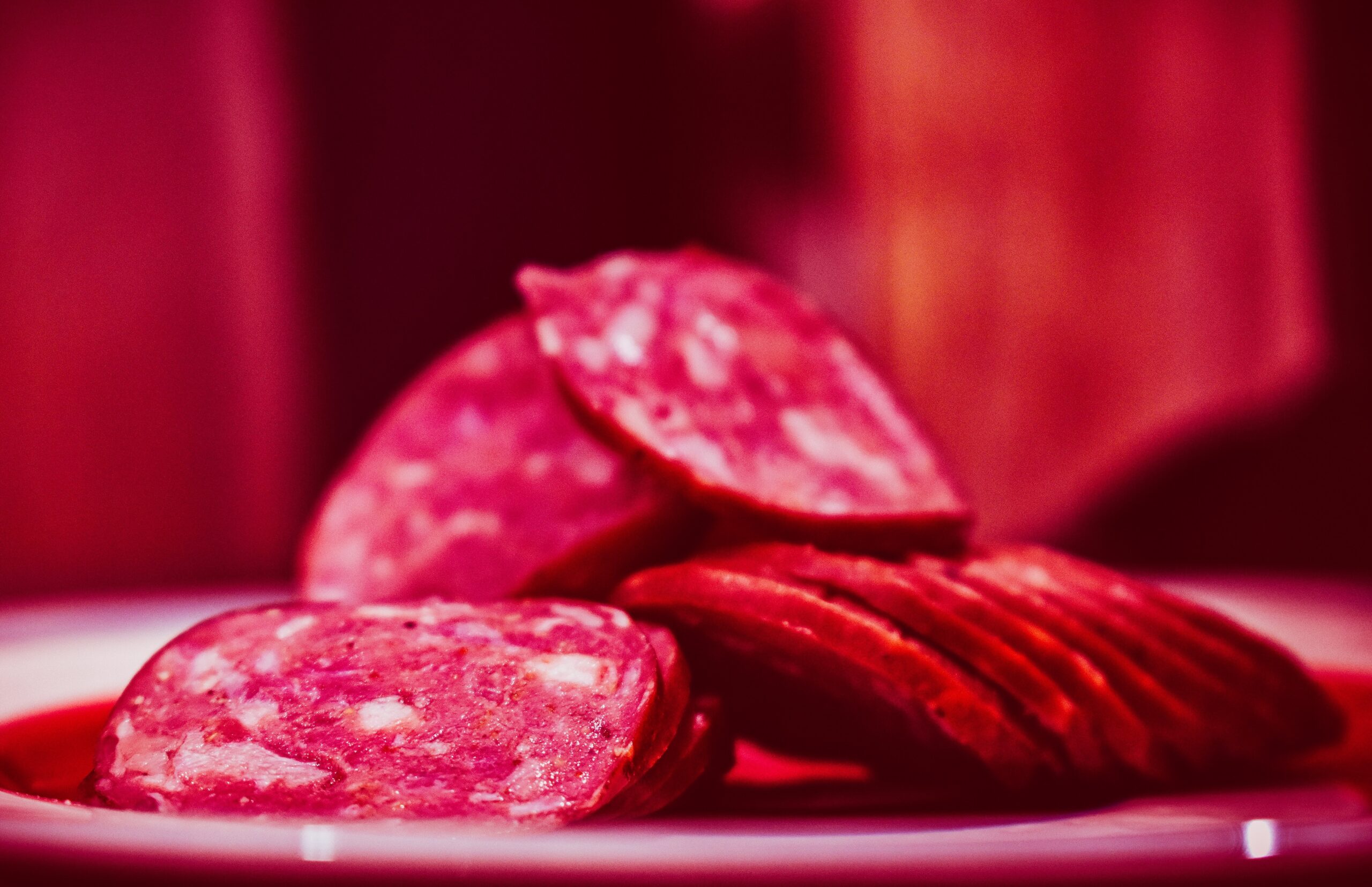Pepperoni, a beloved and flavorful meat topping, is a staple in countless cuisines around the world. Whether adorning a classic pizza, enhancing a sandwich, or adding a punch of flavor to pasta dishes, pepperoni is undeniably versatile and delicious. But have you ever wondered what pepperoni is made of and how it is crafted? In this article, we will explore the ingredients that go into this popular meat product and delve into the intriguing process behind its creation.
What is Pepperoni?
Pepperoni is a type of spicy salami originating from the United States. It is created by curing a mixture of pork and beef and seasoning it with paprika or other types of chili peppers. Before it is cooked, pepperoni is known for its soft texture, mild smoky flavor, and vibrant red color. It is commonly sliced thinly and used in many American pizzerias as a favored pizza topping.
What Are the Ingredients of Pepperoni?
Pepperoni is traditionally made from a blend of pork and beef. However, variations can be found using solely beef or poultry, catering to different dietary preferences. The primary cuts of meat used for pepperoni are typically lean and finely ground to achieve the desired texture and consistency.
In addition to the meat base, pepperoni includes a carefully curated blend of spices and seasonings. Common ingredients found in pepperoni recipes include paprika, salt, black pepper, sugar, paprika, garlic powder, fennel seeds, and cayenne pepper. These seasonings contribute to the distinctive smoky, slightly spicy, and tangy flavor that pepperoni is known for.
To aid in the curing process and extend the product’s shelf life, manufacturers often add nitrates or nitrites, such as sodium nitrite, to pepperoni. These compounds inhibit the growth of harmful bacteria and give the meat its characteristic reddish color. While the addition of nitrates or nitrites has been a subject of debate due to potential health concerns, many modern manufacturers offer nitrate-free or nitrite-free options to cater to consumer preferences.
How is Pepperoni Made?
Pepperoni is a type of sausage made from beef and pork that undergoes a drying and curing process. The meat-to-fat ratio should be approximately 70 percent lean meat and 30 percent fat to achieve the desired flavor and texture. The meat and fat are finely ground to a size of 2 to 3 millimeters.
Creating pepperoni is a meticulous process that involves several key steps, including mixing, stuffing, fermentation, drying, and packaging. Let’s take a closer look at each stage:
1. Mixing
The first step in pepperoni production involves combining the ground meat with the desired blend of spices, seasonings, and other ingredients. The ground meat is mixed with various seasonings like salt, sugar, paprika, and garlic powder. This mixture is carefully mixed to ensure an even distribution of flavors and ingredients throughout the meat. It is then inoculated with Lactobacillus bacteria, which produce lactic acid. This acid is crucial for curing the sausage and gives pepperoni its distinctive tangy taste. Lactobacillus is the same bacteria used in yogurt and cheese production and is also naturally present in sourdough starters.
2. Stuffing
After the mixing process, the seasoned meat mixture is then fed into casings, which are usually made from cellulose or natural animal intestines. The casings help maintain the pepperoni’s shape during the subsequent production stages. The mixture is stuffed into sausage casings and hung in a smokehouse, where it is exposed to warm and humid air at around 77°F (25°C).
3. Fermentation
Once stuffed into casings, the pepperoni is allowed to undergo fermentation. During this phase, the casings are hung in climate-controlled environments where the meat is left to cure for a specific period of time. This environment triggers the fermentation process. The Lactobacillus bacteria consume the sugar in the seasoning, converting it into lactic acid. This acid not only adds flavor but also prevents the growth of harmful bacteria that can cause food poisoning. Fermentation develops the flavor and helps preserve the pepperoni by reducing the water content.
4. Drying
After fermentation, the sausages are smoked using maple and hickory chips, which can take up to five days. After smoking, the sausages are moved to a drying room, where they dry for a few more days. This step involves air-drying the sausages to reduce moisture further and achieve the desired texture and firmness. The drying process can take several weeks to several months, depending on the desired outcome.
5. Packaging
Once the drying process is complete, the pepperoni is removed from the casings, sliced, and packaged for distribution. The packaging ensures the product’s freshness and allows for easy access for consumers. If the pepperoni is intended for pizza topping, it is sliced and packaged accordingly.
The thickness of the slices determines whether they will “cup” during the pizza’s cooking process. Cupping occurs when the edges of the pepperoni slices curl up, forming a cup shape. This gives the edges a crispy texture while allowing the fat from the pepperoni to collect in the center of the cup rather than spreading across the pizza.
Conclusion
Pepperoni, an irresistible combination of meat, spices, and seasonings, has become a culinary sensation in various cuisines worldwide. The delicious flavors and unique textures of this beloved meat product are a result of meticulous craftsmanship and attention to detail during the manufacturing process.
From selecting the finest cuts of meat to blending the perfect combination of seasonings, every step in pepperoni production contributes to its signature taste and quality. Though the use of nitrates and nitrites has sparked concerns, the industry has evolved to offer nitrate- and nitrite-free alternatives to meet consumer demands.
Next time you bite into a slice of pizza topped with savory pepperoni or enjoy a flavorful sandwich, take a moment to appreciate the artistry and craftsmanship that goes into creating this beloved meat product. With its rich history and irresistible taste, pepperoni continues to be a beloved favorite among food enthusiasts worldwide.

